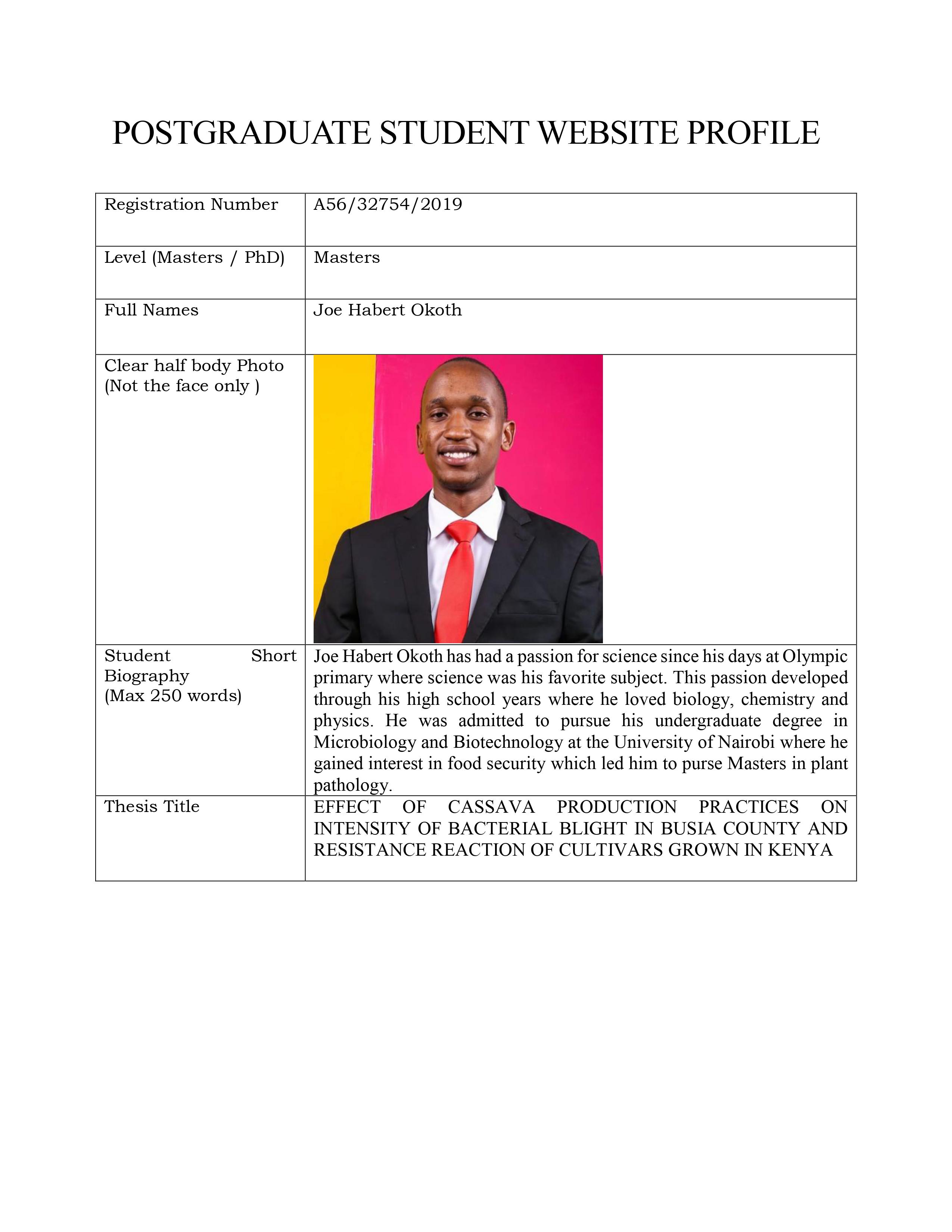
Joe Habert Okoth has had a passion forscience since his days at Olympic primary where science was his favorite subject. This passion developed through his high school years where he loved biology, chemistry and physics. He was admitted to pursue his undergraduate degree in Microbiology and Biotechnology at the University of Nairobi where he gained interest in food security which led him to purse Masters in plant pathology.
Abstract
The study was conducted to determine the effect of cassava production practices on intensity of bacterial blight in Busia county and resistance reaction of cultivars grown in Kenya. Multistage sampling was used to select 193 farmers from Busia County. Information on cassava production practices was obtained using semi-structured questionnaires. Disease intensity was also evaluated on 30 cassava plants along two diagonals. Symptomatic leaf samples were collected for isolation and confirmation of the bacterial blight pathogens. GPS coordinates were also collected from each farm for making disease distribution maps.
Descriptive statistics and Chisquare tests was used to analyze the questionnaire data. Seven varieties were evaluated within the greenhouse in a factorial treatment structure within a complete randomized block design. Each variety was infected with the two bacterial blight pathogens Xanthomonas phaseoli pv manihotis and Xanthomonas axonopodis pv cassavae on the stem and leaves. Observations were made at an interval of six days’ post inoculation for six weeks. Cassava bacterial blight was present at high incidence in Busia county. Xanthomonas phaseoli pv manihotis was the widest spread. Furthermore, none of the production practices was associated with the high incidence suggesting that other factors like ignorance contributed to the high incidence as 85% of the farmers didn’t know the disease. All the seven varieties assessed were susceptible with area under disease progress curve values of more than 50%. Therefore, effort is needed to make farmers aware of cassava bacterial blight. Additionally more varieties should be assessed for bacterial blight resistance.
Research Supervisors
Prof. James W. Muthomi and Prof. Agnes W. Mwang’ombe
